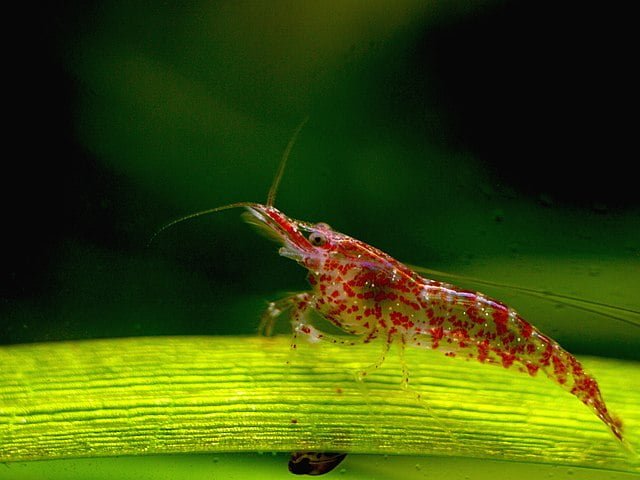
The aquaculture industry is experiencing significant growth in many parts of the world. However, effective management and planning of aquaculture activities require precise and up-to-date spatial information.
To address this need, researchers from Western Paraná State University (UNIOESTE), Embrapa Fisheries and Aquaculture (EMBRAPA), the National Institute for Space Research (INPE), and Biopark Education have developed a novel methodology to map aquaculture areas in the state of Paraná, Brazil. By leveraging the power of satellite imagery and advanced machine learning techniques, they have successfully identified and quantified aquaculture ponds throughout the region.
The study used high-resolution satellite images from the Planet Program of Norway’s International Climate and Forests Initiative (NICFI), processed on the Google Earth Engine (GEE) platform. A Random Forest (RF) algorithm was employed to classify pixels as aquaculture or non-aquaculture based on a series of spectral and spatial features extracted from the images.
The Challenge of Territorial Management in Aquaculture
Climate change, in particular, poses a major threat to the aquaculture industry, as extreme weather events, such as floods and droughts, affect aquatic environments and aquaculture production.
To address these challenges, it is essential to accurately monitor and assess the distribution and development of aquaculture. In recent years, geospatial research in aquaculture has gained increasing attention, and the use of high-resolution satellite images and machine learning algorithms has become increasingly popular.
The Role of Geospatial Technology in Aquaculture
Geospatial technology, which includes satellite remote sensing and geographic information systems (GIS), has emerged as a powerful tool for monitoring and managing aquaculture activities. By providing detailed spatial information, these technologies allow for the identification of suitable aquaculture sites, the assessment of environmental impacts, and the tracking of aquaculture pond expansion.
Case Study: Aquaculture Mapping in Paraná, Brazil
This study focused on the state of Paraná, a major producer of Nile tilapia in Brazil. By employing a combination of remote sensing techniques and machine learning algorithms, the researchers were able to automatically extract aquaculture ponds from satellite images. The use of the Random Forest algorithm, a powerful classification technique, enabled the accurate identification of aquaculture areas, even in complex landscapes.
Accurate and Comprehensive Mapping
The developed methodology demonstrated high accuracy, with an overall accuracy of 87%. Specifically, the model accurately identified 89% of aquaculture pixels and 96% of non-aquaculture pixels. This level of accuracy allows for a reliable assessment of the extent and distribution of aquaculture activities in the state.
Stay Always Informed
Join our communities to instantly receive the most important news, reports, and analysis from the aquaculture industry.
The mapping results revealed the presence of 42,369 aquaculture ponds, covering a total area of 11,515 hectares. Notably, 40% of these ponds were concentrated in just two mesoregions, highlighting the uneven distribution of aquaculture across the state.
Implications for the Aquaculture Industry
The findings of this study have significant implications for aquaculture development in Paraná (Brazil); however, the protocol developed by scientists can be applied elsewhere in the world. By providing detailed spatial information, this research can support:
- Informed decision-making: Identifying suitable locations for new aquaculture ventures, minimizing environmental impact, and optimizing resource utilization.
- Monitoring and regulation: Tracking the expansion of aquaculture activities and enforcing regulations to prevent illegal or unsustainable practices.
- Resource management: Assessing the water resource requirements of aquaculture and identifying areas where water scarcity may limit further development.
- Spatial planning: Integrating aquaculture into broader land-use planning to ensure compatibility with other activities and ecosystem conservation.
Conclusion
In conclusion, the study highlights the importance of geospatial research in aquaculture, particularly in the context of climate change. By using satellite images and machine learning algorithms, managers can accurately monitor and assess the distribution and development of aquaculture, enabling more sustainable and efficient management of the industry.
The methodology can be used to support the growth and sustainable development of aquaculture in the region and can provide systematic monitoring of aquaculture production in the country. We believe that the study can provide a valuable tool for policymakers, researchers, and industry professionals.
The study was funded by Fundação Araucária and the Secretariat of Science, Technology and Higher Education – SETI, Biopark Education, and Embrapa Fisheries and Aquaculture.
Contact
Bruno Aparecido Silva
Western Paraná State University (UNIOESTE), Biopark Education
Block 1 Charles Darwin, 3797, Toledo, Paraná, Brazil
Email: brunoborchertesilva@gmail.com
Reference
Silva, B. A., Ummus, M. E., Hayakawa, E. H., Bennert, A., Adami, M., Trombini, C. B., Feiden, A., Vasco, K. L., & Brito, A. G. (2024). Mapping aquaculture in inland continental areas of Brazil using machine learning on the Google Earth Engine. Remote Sensing Applications: Society and Environment, 36, 101391. https://doi.org/10.1016/j.rsase.2024.101391
Editor at the digital magazine AquaHoy. He holds a degree in Aquaculture Biology from the National University of Santa (UNS) and a Master’s degree in Science and Innovation Management from the Polytechnic University of Valencia, with postgraduate diplomas in Business Innovation and Innovation Management. He possesses extensive experience in the aquaculture and fisheries sector, having led the Fisheries Innovation Unit of the National Program for Innovation in Fisheries and Aquaculture (PNIPA). He has served as a senior consultant in technology watch, an innovation project formulator and advisor, and a lecturer at UNS. He is a member of the Peruvian College of Biologists and was recognized by the World Aquaculture Society (WAS) in 2016 for his contribution to aquaculture.




